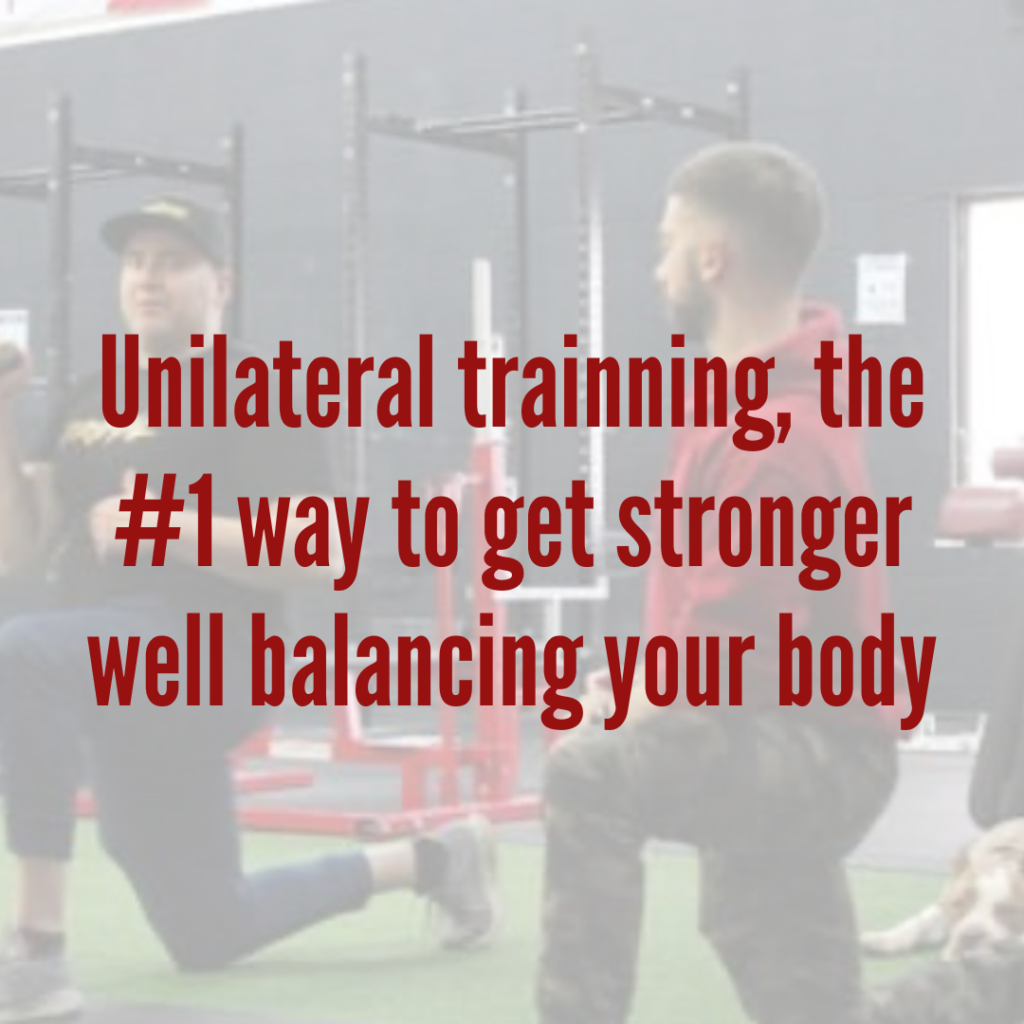
A strength coaches guide to UNLOCKING the power of unilateral EXERCISES to become stronger and more injury RESISTANT
In the world of fitness and strength training, the quest for balance, power, and optimal performance is never-ending. Enter unilateral training, a powerful method to not only enhance your strength but also achieve body balance like never before. Often overshadowed by more conventional approaches, unilateral training—or single-limb training—deserves its spotlight for its remarkable benefits.
What is Unilateral Training?
Unilateral training involves exercises that specifically engage one side of your body at a time. This distinctive approach stands in contrast to bilateral movements, such as squats or deadlifts, which work both sides of your body simultaneously. But why focus on one limb when you could engage both? The answer lies in the unique advantages unilateral training brings to the table.
The Path to Equilibrium and Strength
Each individual carries natural imbalances between their left and right sides, a result of differing daily activities, posture habits, and even dominant hand use. These discrepancies can lead to muscular imbalances, affecting movement patterns and potentially leading to injuries. Unilateral training steps in as a strategic method to iron out these imbalances, ensuring each side’s muscles can independently support and perform, thus promoting a harmonious balance within the body.
Beyond Balancing: Enhancing Bilateral Movements
Interestingly, unilateral exercises don’t just remedy imbalances; they also contribute to your overall strength, particularly in bilateral movements. Exercises like lunges or single-arm dumbbell bench presses challenge your core stability and muscle coordination in ways that traditional bilateral exercises might not. This enhanced core engagement and stabilization not only prepare your body to handle heavier loads during conventional lifts but also improve your functional movement outside the gym.
The Unseen Heroes: Core and Stabilizers
One of the unsung benefits of unilateral training is its effect on the muscles that often go unnoticed in other forms of exercise—the core and stabilizers. Due to the inherent instability of unilateral exercises, these muscles are called into action, ensuring balance and proper form. This not only aids in preventing injuries but also contributes to a stronger, more resilient physique capable of tackling more demanding workouts and daily tasks.
Implementing Unilateral Training Effectively
To reap the full benefits of unilateral training, consider these tips:
- Address the Weakest Link First: Start your unilateral exercises with the weaker side, choosing weights based on its capabilities. Use the same weight and perform the same number of reps on the stronger side to promote symmetry.
- Progress with Purpose: Once you’ve mastered the basics, increase the challenge by modifying loading patterns to further test stability and muscle engagement.
- Incorporate Variety: Don’t neglect the inclusion of various unilateral movements in your routine. Your future self will thank you for the diversified approach to strength and balance.
- A Note to Powerlifters: Given the asymmetrical nature of the sport, incorporating unilateral exercises into your training regimen can enhance symmetry and performance in your primary lifts.
The Verdict
If unilateral training hasn’t been part of your workout routine, it’s time to consider its inclusion. Not only does it pave the way for a more balanced and injury-resistant body, but it also sets the stage for greater strength gains in both your workouts and daily life. Remember, the goal of fitness is not just about lifting heavier but moving smarter and living a balanced, healthy lifestyle. Unilateral training, with its unique challenges and benefits, is a pivotal piece of that puzzle.
